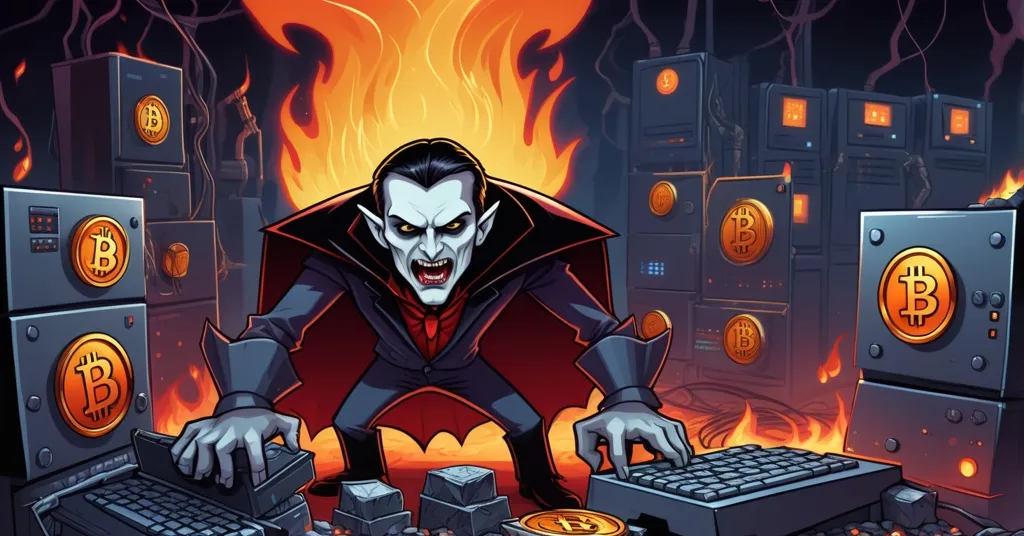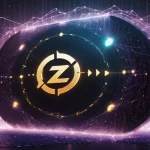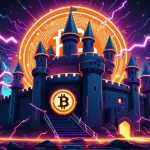Jameson Lopp Urges Bitcoin Community to Burn Quantum-Vulnerable Coins

Top Cypherpunk Calls for Burning Quantum-Vulnerable Coins: Jameson Lopp’s Urgent Plea
Jameson Lopp, a prominent cypherpunk, has urged the Bitcoin community to burn coins vulnerable to quantum computing attacks, warning that quantum miners could become “vampires feeding upon the system,” jeopardizing Bitcoin’s security and integrity.
- Jameson Lopp advocates burning quantum-vulnerable Bitcoins
- Quantum recovery threatens property rights and network trust
- Potential for large-scale theft could crash Bitcoin’s price
- Quantum miners likened to “vampires feeding upon the system”
- Recent quantum computing advancements heighten the threat
Jameson Lopp, a stalwart in the cypherpunk community known for his advocacy of privacy and security in digital communications, has taken a proactive stance against the looming threat of quantum computing on Bitcoin. In his recent blog post titled “Against Quantum Recovery of Bitcoin,” Lopp argues that allowing the recovery of lost or unspent Bitcoins using quantum computing would not only violate property rights but also erode the trust that underpins the Bitcoin network. This erosion, he contends, could precipitate a catastrophic crash in Bitcoin’s price due to large-scale theft.
Lopp’s vivid imagery of quantum miners as “vampires feeding upon the system” paints a stark picture of entities exploiting the network without contributing to its security or integrity. He emphasizes that even if quantum recovery efforts are intended benevolently, the powerful technology could easily fall into the hands of bad actors, further undermining Bitcoin’s security.
The urgency of Lopp’s call is heightened by recent advancements in quantum computing technology. Google’s Willow chip has made significant strides in quantum error correction, bringing the threat of quantum attacks on Bitcoin’s cryptographic security closer to reality. Similarly, Microsoft’s Majorana 1 chip, despite facing criticism from scientists like Henry Legg, Vincent Mourik, and Sergey Frolov for potentially unsubstantiated claims, represents another step forward in the race to develop practical quantum computers.
Quantum computing, a type of computing based on quantum mechanics, has the potential to break current encryption methods, including those used by Bitcoin. This poses a significant threat to the network’s security, particularly the elliptic curve digital signature algorithm (ECDSA) used for transactions. The development of quantum-resistant algorithms, such as lattice-based cryptography, is crucial for maintaining Bitcoin’s security in the future.
Lopp’s argument is not just about preventing theft; it’s about preserving the fundamental principles of Bitcoin. As he succinctly puts it:
I, for one, am not interested in rewarding quantum capable entities by inflating the circulating money supply just because some people lost their keys long ago and some laggards are not upgrading their Bitcoin wallet’s security.
This statement underscores the ethical and economic implications of allowing quantum recovery. It’s a call to action for the Bitcoin community to take responsibility for securing their assets and for the network to maintain its integrity in the face of emerging technological threats.
While Lopp’s views align with a Bitcoin maximalist perspective, emphasizing the need to protect the network’s core values, it’s important to acknowledge the broader context of quantum computing’s impact on all cryptocurrencies and blockchain systems. Ethereum and other innovative protocols also face similar threats, and the entire industry must grapple with the challenge of quantum-resistant cryptography.
The debate around quantum computing’s impact on Bitcoin is part of a larger conversation about the future of digital security. As quantum technology advances, the race is on to develop quantum-resistant algorithms that can safeguard not just Bitcoin but all digital assets against this new frontier of potential attacks.
Yet, amidst the seriousness of this issue, it’s worth noting that the notion of “vampires” in the Bitcoin network adds a touch of dark humor to the discussion. It’s a reminder that while the stakes are high, the community’s resilience and creativity in facing these challenges are equally formidable.
Counterarguments to Lopp’s stance exist. Some argue that burning Bitcoins is a drastic measure and that other solutions, such as developing quantum-resistant algorithms, should be prioritized. These perspectives highlight the ongoing debate within the crypto community about the best way to address the quantum computing threat.
The potential economic disruption from quantum recovery of Bitcoins could be more severe than outlined, as it might not only affect Bitcoin’s price but also lead to broader financial market instability due to the sudden influx of large amounts of currency. This underscores the need for a comprehensive approach to quantum security across various sectors.
Key Takeaways and Questions
- What does Jameson Lopp advocate for regarding quantum-vulnerable Bitcoins?
Lopp advocates for burning Bitcoins vulnerable to quantum computing attacks to prevent theft and maintain network integrity.
- Why does Lopp believe quantum recovery won’t work?
Lopp believes it would violate property rights, erode trust, and could lead to a crash in Bitcoin’s price due to large-scale theft.
- What comparison does Lopp make about quantum miners?
He compares quantum miners to “vampires feeding upon the system,” indicating they would undermine Bitcoin’s security.
- What recent developments in quantum computing are mentioned?
Google’s Willow chip and Microsoft’s Majorana 1 chip are highlighted as recent advancements.
- What criticism has Microsoft faced regarding its quantum computing claims?
Some scientists have criticized Microsoft for making unsubstantiated claims about its Majorana 1 chip.


